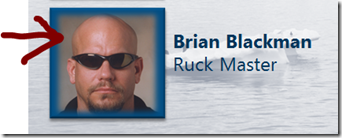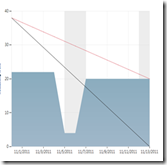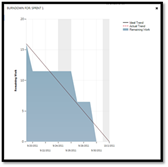Why we believe in dogfooding …
Who is we?
 |
We are the project team working on delivering practical and scenario based guidance for the implementation of Team Foundation Server. We will guide you through the decisions whether to have one or more Team Foundation Servers, one or more Team Project Collections, one or more Team Projects and one or more Teams, based on scenarios and implications of each decision. |
| Also known as ACV within the Rangers ecosystem … African Cape Vulture. |  |
| We have a phenomenal team of passionate, competent and experienced ALM Rangers (Tina Erwee, Mario Rodriguez, Gregg Boer, Lennart Jansson, Jim Szubryt and Daniel Meixner) working on the team, supported by our tenacious Ruck Master (Brian Blackman) |
What did we dogfood?
Team Foundation Server on Windows Azure: A Rangers dogfooding perspective gives you a good overview of the technologies and objectives we encapsulated into our dogfooding objective. To deliver practical guidance we have to work with the past, the present and the future in terms of Team Foundation Server.
It unfortunately means that we are constantly aiming at a moving target … imagine flying a remote controlled plane that has a 2 second delay between you moving the transmitter controls and the receiver on the plane reacting, while chasing another remote controlled plane in a dog fight. It is a challenging, ambitious and often frustrating experience, but we are confident that we will be delivering a comprehensive and practical solution.
Why do we believe in the dogfooding?
The ALM Rangers, as the name implies, are passionate about and experienced in ALM tooling, such as Visual Studio, Team Foundation Server, and methodologies such as MSF, Agile, Scrum and Ruck. They evangelize and guide the community to use the ALM tooling … which means that it is only logical that they use the same tooling for the ALM requirements.
While the previous argument is my personal opinion and is potentially going to open a can of worms, the fact that the dogfooding gives us access to the latest and greatest technologies, enables collaboration with the product teams and gives us an opportunity to give candid feedback to the product team which will be considered is so obvious it it scary that many have not embraced the dogfooding concept yet.
 Our Ruck Master is loosing more and more hair trying to motivate all the ALM Rangers to dogfood both the tooling and our extreme-Agile Ruck process (Visual Studio ALM Rangers - Reflections on Virtual Teams) … as we can see from his photo he has gone through a horrid time … but, I believe that the ACV team has some good and positive message to share.
Our Ruck Master is loosing more and more hair trying to motivate all the ALM Rangers to dogfood both the tooling and our extreme-Agile Ruck process (Visual Studio ALM Rangers - Reflections on Virtual Teams) … as we can see from his photo he has gone through a horrid time … but, I believe that the ACV team has some good and positive message to share.
Why … take note of some of the recent team burndown charts we have been analyzing and pondering over…








 … I wish I could read your mind at this point.
… I wish I could read your mind at this point.
To conclude, let us take look at our sprint 1-5.5 retrospective notes
Burndown Charts
The sixth sprint burndown looks positive as well … we are trying hard to complete by the 15th to be able to unplug from the digital world and focus the rest of December on our families.


Our stand-up meeting interface … out of the box!
The magic potion of the ACV team consists of:
- A small team that is focused, passionate and committed to the dogfooding.
- A team that took the time to define the Epic, the associated product backlog items and the tasks.
- A team that is engaged when the sprint backlog planning is done.
- A team that works as a team … either we all succeed or fail as one. If a team member has an impediments, others jump in.
- A team that has realized the value of investing a few seconds per day to keep an up-to-date backlog.
- A team that loves the predictability and fortune-telling advantages that consistency and visibility introduces.
- A team that collaborates with the tooling product teams, gives candid feedback and enjoys the innovations that emerge in subsequent versions.
- A team lead that guides, supports and encourages the team with endless tenacity.
The headaches even our team is still having to contend with:
- The unfortunate characteristic of ALM Rangers over-committing and eventually imploding.
- The (fortunately infrequent in our case) unplanned disappearance of our part-time and voluntary resources … going dark and becoming a Darth Ranger.
- The challenge of collaborating with remote and extremely busy product owners.
Final value-add of our dogfooding adventure … why we believe in dogfooding:
A few weeks ago we submitted a long list of frustrating issues we had with the Team Foundation Server on Windows Azure Web Client. Last night we started testing the latest release which was deployed while we were all working and had this to say to the product team:
- The look & feel is very user friendly and productive





- The navigation is vastly improved … we no longer have to hunt around to try and find where we should have to go





- The clear distinction between user and administrator user interface adds clarity and clear boundaries





- The backlog, sprint and work item management is vastly improved.
In fact we had no urge to switch to Visual Studio Team Explorer this morning and only used Excel for bulk updates


- The rollout of the new release was seamless and we hardly noticed any downtimes



Comments such as “Awesome” and “Icing on the cake” highlighted the delight of the ALM Rangers who realized that their dogfooding and collaboration efforts have had a positive impact on the product we have long ago fallen in love with.
To cut a long blog post short I would like to say:
- THANK YOU ACV TEAM for supporting the dogfooding objective and for investing so much passion, energy, time and knowledge into our project
- THANK YOU product TEAM for collaborating with and listening to us … and continuously making Visual Studio a better place to live in

If you want to know more or have candid feedback, please add your comment to this post and get an active discussion thread going.
Comments
Anonymous
December 10, 2011
How do you get people to daily update TFS? What carrots and sticks are you using? How are you mitigating the "over-committing and eventually imploding." and going dark problems? Shadow resources? Pair Task assignment? other?Anonymous
December 11, 2011
A combination of having the right Rangers on the team and regular tenacious project lead follow-ups. It is not an easy task, but after a while it seems to become second nature :)








